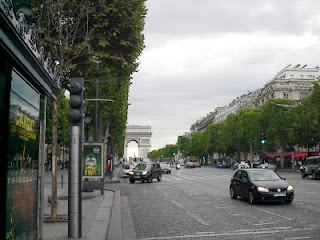South America - Physical Map (Cartography)
Dr. Edmar Bernardes DaSilva (Masters in Geography and Doctor of Geography Education)
First, for the purpose of this article the term geography must be defined. Geography is an integrative discipline that brings together the physical and human dimensions of the world in the study of people, places, and environments (Geography for Life, National Geographic Society, 1994 in Mansfield, 2005).
Geography is one of the oldest of the sciences and scholarly disciplines. Like astronomy, geography is concerned with the content of space. It may be said that geography has a shared common origin with astronomy.
The peak of Geography’s relative importance as a discipline among sciences came in the period of the great explorations (from the 15th century into the 19th century: Vasco da Gama…).
The peak of Geography’s relative importance as a discipline among sciences came in the period of the great explorations (from the 15th century into the 19th century: Vasco da Gama…).
Early Greeks geographers who first gave structure to geography. Eratosthenes (276 BC - 194 BC) the father of classical geography, was the first to coin the word geography. He paved the way in the study of the earth . He was born in the Greek colony of Cyrene in Libya. He wrote a book describing the ekumene, the inhabited earth, in which he accepted both the major divisions of Europe, Asia, Libya, and the five zones: a Torrid Zone, two Temperate Zone, and two Frigid Zones. Started his education in Cyrene and later in Athens. Eratosthenes died at the age of 80. Is to this day one of the greatest geographers of all ages.
Modern geography had its origin in the surge of scholarly inquiry that, started in the 17th century Germany: important place for the development of modern geography. Germans are in reality the fathers of modern geography, and the greatest German geographer was Alexander von Humboldt (1769-1859). Regarded as the father of modern geography. Von Humboldt studies, travels and scientific wisdom transformed natural science in the nineteenth century.
Why learn geography? What can I do with geography?
Ouro Preto Brazil - A Cultural Landscape (Urban Geography)
Geography has useful value in the modern globalized world. As the linkages of the world accelerates the realistic need for geographic knowledge (geographical education) becomes more serious. Think about a doctor who treats diseases without understanding the geographical environment in which the diseases flourish and proliferate, or a manufacturer who is ignorant of world markets and resources, or a postal worker anywhere who cannot differentiate Austria from Australia. With a strong understand of geography, people in general are better equipped to solve issues at not only at the local level but also at the regional, national and global levels.
Fields of Geography
Earth Systems Science (Physical Geography)Focuses on research and education dealing with Earth’s dynamic processes, materials and physical properties (weather, climate, geology, landforms and landscapes, soils and bioregions).
Human-Environment Systems Science (Human Geography)Focuses on the measurement, analysis and modeling of human and environmental systems
and their interactions at various spatial and temporal scales.
and their interactions at various spatial and temporal scales.
Rice Fields in India (Economic Geography)
Subfields of Human Geography:
Cultural Geography Economic Geography
Urban Geography
Political Geography
Environmental Geography
Tourism Geography
Population Geography...
Cultural Geography Economic Geography
Urban Geography
Political Geography
Environmental Geography
Tourism Geography
Population Geography...
Geo-Information Science (Cartography)
This area emphasizes analytical techniques suited to the understanding
and modeling of the Earth and human phenomena.
This area emphasizes analytical techniques suited to the understanding
and modeling of the Earth and human phenomena.
The five Fundamental Themes of geography are summarized by a joint committee of the National Council of Geographic Education and the Association of American Geographers:
Location: The meaning of relative and absolute position on the earth’s surface.
Mongolia (A Place on Earth)
Relationships within places: The development and consequences of human-environment relationships.
Movement: Patterns and change in human spatial interaction on the earth.
Regions: How they form and change.
Copyright © All right reserved/July-2007





































